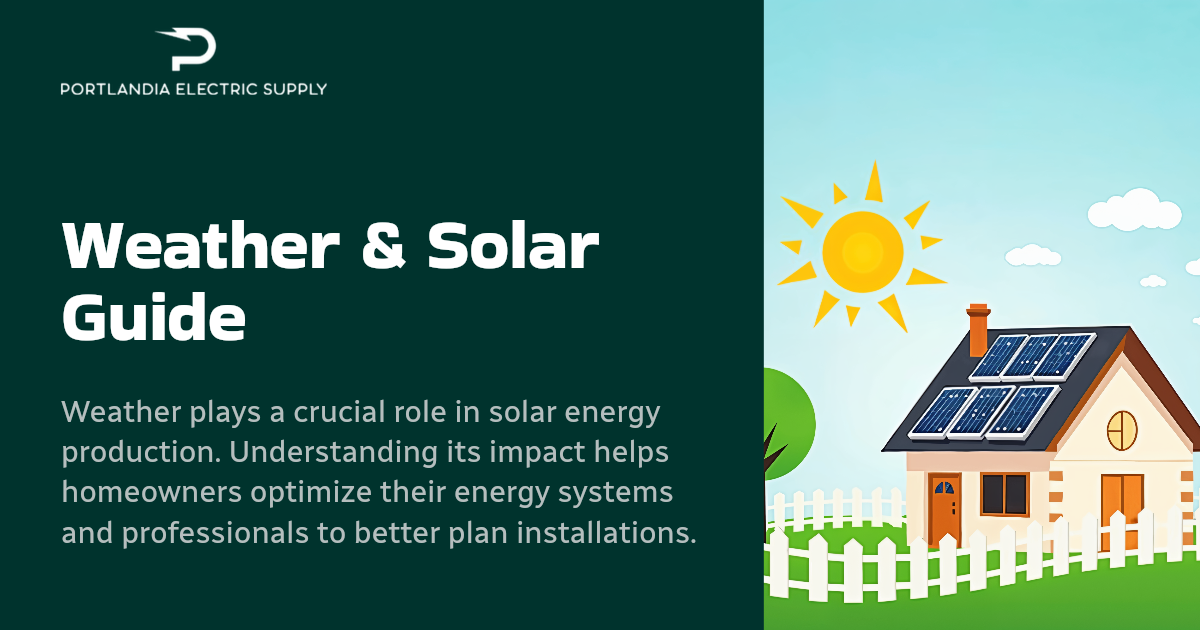How Weather Influences Solar Energy Production: A Comprehensive Guide for Homeowners and Energy Professionals

Weather Influences Solar Energy Production: Detailed Guide
With the growing demand for sustainable energy solutions, it has become vital to understand how weather influences solar energy production. Homeowners and energy professionals alike must grasp the complex relationship between solar systems and weather conditions. From clear sunny days to heavy rain and cloud cover, each weather element plays a pivotal role in determining solar panel efficiency and productivity. Understanding how weather influences solar energy production enables smarter decisions, optimizing performance and ensuring the long-term success of solar investments.
Understanding How Weather Influences Solar Energy Production
The relationship between weather and solar energy is intricate and multifaceted. Recognizing how weather influences solar energy production is essential for anyone involved in planning or managing solar installations.
Sunlight availability directly impacts solar output, but other factors such as temperature, rainfall, and seasonal variations also significantly contribute. Solar Liberty emphasizes that solar panels can produce energy even on cloudy and rainy days, though at reduced efficiency, demonstrating the importance of understanding regional weather patterns.
Seasonal fluctuations matter too. Longer, sunnier summer days boost solar output, while shorter winter days naturally reduce production. Still, cooler temperatures during winter can enhance panel efficiency, showing another layer of how weather influences solar energy production throughout the year.
Cloud Cover and Its Impact
Cloud cover is one of the most evident ways that weather influences solar energy production. Depending on their thickness and density, clouds can either slightly or drastically reduce solar panel output.
-
Thin Clouds: Light cloud cover may reduce production by just 10–25%.
-
Thick Clouds: Dense, low-hanging clouds can cut efficiency by as much as 50–90%.
Interestingly, phenomena like the “edge-of-cloud effect” can temporarily amplify sunlight intensity when sunlight reflects off cloud edges, momentarily enhancing solar output.
Rain: A Double-Edged Sword
Rainfall further illustrates how weather influences solar energy production. Heavy rain decreases immediate sunlight exposure, leading to lower energy generation. However, rain also naturally cleans solar panels, washing away dirt, dust, and pollen that could otherwise hamper efficiency.
Tamesol reports that during rainy days, solar systems may operate at only 10–25% of their capacity. Yet in dusty regions, the rain’s cleaning effect often results in a net positive impact over time.
Temperature Variations: Hot vs. Cold
Temperature is another critical factor in how weather influences solar energy production. While many assume hotter weather is better for solar power, the reality is more nuanced.
Solar panels operate most efficiently at around 25°C (77°F). Beyond this, higher temperatures can lower panel performance. In fact, for every degree above 25°C, efficiency can drop by approximately 0.5%. This phenomenon means that while desert regions receive intense sunlight, extreme heat can ironically reduce their solar productivity.
Conversely, cool sunny days are ideal, combining abundant sunlight with temperatures conducive to maximum panel performance.
Seasonal Shifts in Solar Output
Seasonal weather changes heavily affect how weather influences solar energy production.
-
Summer: Longer daylight hours and higher sun angles generally maximize energy production, but extreme heat can somewhat offset these gains.
-
Winter: Shorter days and lower sun angles reduce total energy production, yet cold temperatures can help maintain higher efficiency on sunny days.
These seasonal variations must be factored into solar project planning to ensure accurate expectations and optimal system design.
Wind’s Role in Solar Panel Performance
Wind provides another example of how weather influences solar energy production. Moderate winds can aid performance by cooling panels and removing dust. Strong airflow prevents overheating, maintaining panel efficiency even during hotter periods.
However, extreme wind conditions demand careful structural design. Panels and mounting systems must be robust enough to withstand high winds without sustaining damage.
Snow and Ice Challenges
Snow and ice further show how weather influences solar energy production, particularly in colder regions.
-
Snow Coverage: A thick layer of snow can block sunlight, temporarily halting energy production.
-
Snow Reflection: Once snow slides off, the reflective surface can enhance solar input by bouncing extra sunlight onto panels.
Modern systems typically install panels at an angle to encourage snow shedding naturally. Therefore, although snow may temporarily reduce output, its long-term impact on annual production tends to be minimal.
Technology’s Role in Mitigating Weather Impacts
Technological advancements are critical in minimizing how weather influences solar energy production. Some notable innovations include:
-
Bifacial Solar Panels: Capture sunlight from both sides, improving energy yield in various conditions.
-
Anti-Reflective and Self-Cleaning Coatings: Maintain cleaner panels with minimal manual maintenance.
-
Smart Inverters and Optimizers: Adjust system output dynamically in response to real-time weather variations.
Embracing these technologies ensures solar systems remain resilient against weather unpredictability.
Maintenance Strategies Against Weather Challenges
Proactive maintenance is crucial for managing how weather influences solar energy production. Key strategies include:
-
Regular Cleaning: Especially in dusty or polluted areas, as rain alone may not suffice.
-
Seasonal Inspections: Identify and repair damage from storms, wind, or snow.
-
Snow Management: In heavy snowfall regions, safe snow removal techniques may be necessary to restore production quickly.
Routine checks and cleaning help sustain peak performance year-round.
Strategic Decision-Making for Solar Installations
Thoroughly understanding how weather influences solar energy production is essential when planning solar projects. Important steps include:
-
Analyzing Local Weather Patterns: Historical weather data helps predict average solar production levels.
-
Considering Shading Factors: Structures, trees, and even seasonal variations must be assessed.
-
Factoring in Climate Change: Anticipating future weather shifts ensures long-term system success.
Modern forecasting tools, such as satellite-based solar irradiance models and machine learning algorithms, offer highly accurate predictions for solar output, tailored to specific locations and conditions.






